Casio G-Shock MRG-G1000DC-1ADR Handleiding
Bekijk gratis de handleiding van Casio G-Shock MRG-G1000DC-1ADR (14 pagina’s), behorend tot de categorie Horloge. Deze gids werd als nuttig beoordeeld door 77 mensen en kreeg gemiddeld 4.4 sterren uit 39 reviews. Heb je een vraag over Casio G-Shock MRG-G1000DC-1ADR of wil je andere gebruikers van dit product iets vragen? Stel een vraag
Pagina 1/14

Basic Operations
This section provides an overview of the watch
and its operations.
Note
●The illustrations included in this
manual have been created to
facilitate explanation. An illustration
may differ somewhat from the item it
represents.
General Guide
30
③① ②
⑤
④
⑥ ⑦ ⑧
⑨
AHour hand
BSecond hand
CMinute hand
D24-hour hand
ESmall minute hand
FSmall hour hand
GMode hand
HDay indicator
ICrown
Watch Face Items
①
②
③
④
⑤
⑥
⑦
⑨
⑧
⑩
⑪
⑫
⑬
ASignal receive result
BAlarm off
CAlarm on
DTime calibration reception in progress
EGPS signal time information and position
information acquisition in progress
FGPS signal time information reception in
progress
MA1710-EG © 2014 CASIO COMPUTER CO., LTD.
GSummer time setting
HApproximate latitude
(N side: North latitude, S side: South
latitude)
IDay of the week
JAirplane Mode
KStopwatch Mode
LTimer Mode
MAlarm Mode
Navigating Between Modes
Your watch has four modes.
You tell which mode the watch is currently in
by checking the position of the mode hand.
●Timekeeping Mode (normal timekeeping):
Current day of the week
●Stopwatch Mode: ST (STW)
●Timer Mode: TR
●Alarm Mode: AL
CC
CC
Timekeeping Mode
30
30
30
30
Mode hand
Alarm Mode
Timer Mode
Stopwatch Mode
Use the (C) button to navigate between
modes.
●Hold down (C) for at least two seconds to
return to the Timekeeping Mode.
●Holding down (C) for four seconds or longer
will enter or exit the Airplane Mode. The
mode hand points to h while the watch is in
the Airplane Mode.
l Using the Watch on an Aircraft
Using the Crown
The watch’s crown is a screw-in (screw lock)
type. To use the crown, you first need to rotate
it towards you (leftwards) to loosen it.
Loosen
Crown
Important!
●To prevent loss of water resistance
and/or damage due to impact, be
sure to push the crown in and lock it
when not in use.
●When pushing the crown back in,
take care not to apply too much
force.
●Fast Forward/Fast Reverse
Normal position
Second click
First click
Crown
After pulling out the crown to the first or second
click, rotating it quickly in succession in either
direction will start a fast forward or fast reverse
operation. While a fast forward operation is in
progress, quickly rotating the crown in
succession again will increase the speed even
further.
●The fast reverse operation speed is fixed
and cannot be changed.
●Stopping Fast Forward/Fast Reverse
Rotate the crown in the direction opposite that
of the ongoing operation or press any button.
Note
●If you do not perform any operation
for about two minutes after pulling
out the crown, crown operations will
automatically become disabled. If
that happens, push the crown back
in and then pull it out again.
Operation Guide 5411
1

Solar Charging
What is solar charging?
This watch runs on power supplied from a
rechargeable (secondary) battery that is
charged by a solar panel. The solar panel is
integrated into the face of the watch, and
power is generated whenever the face is
exposed to light.
●This watch uses a special rechargeable
(secondary) battery.
ーThe watch’s battery will not charge if the
watch’s temperature is less than
approximately -10°C (14°F) or greater
than approximately 60°C (140°F).
ーOver-discharge will occur if the watch is
not charged within approximately three
months after it stops operation due to low
battery power. Charging may not be
possible after over-discharge occurs.
Charging the Watch
When you are not wearing the watch, put it in
a location where it is exposed to bright light.
While you are wearing the watch, make sure
that its face (solar panel) is not blocked from
the light by the sleeve of your clothing. Power
generation efficiency is reduced even when
the face of the watch is blocked only partially.
NOYES
Important!
●If the second hand stops for some
time after the watch is continuously
exposed to light, it could mean that
charging is not possible due to over-
discharge. Request chargeable
(secondary) battery replacement by
your original retailer or authorized
CASIO service center.
●Depending on light intensity and
local conditions, the watch may
become hot to the touch when
exposed to light for charging. Take
care to avoid burn injury after
charging. Also, avoid charging the
watch under high-temperature
conditions like the ones described
below.
ーOn the dashboard of a vehicle
parked in the sun
ーNear an incandescent light bulb or
other source of heat
ーUnder direct sunlight or in other
hot areas for long periods
Note
●Exposing the watch face to light after
the battery goes dead will cause the
second hand to revolve
counterclockwise until it stops at
second 57. This indicates charging
has started.
●A fully charged watch can operate
for approximately seven months
without further charging. Watch
operation will stop approximately 20
days after the battery goes low.
Charging Time Guidelines
The table below shows guidelines for
approximate charging times.
Required Charging Time for 1-day Use
Light Intensity Approximate Charging Time
High
p
Low
A8 minutes
B30 minutes
C48 minutes
D8 hours
Time Required to Achieve Next Charge
Level
Light Intensity
Approximate Charging Time
Charge Level
1
Charge Level
2
High
p
Low
A 8 hours 37 hours
B 26 hours 139 hours
C 40 hours 225 hours
D 449 hours -
Light Intensity
ASunny day, outdoors (50,000 lux)
BSunny day, near a window (10,000 lux)
COvercast day, near a window (5,000 lux)
DIndoor fluorescent lighting (500 lux)
Charge Level 1 :
Time from dead battery until hand movement
starts
Charge Level 2 :
Time from hand movement starts until a full
charge
Note
●Actual charging time depends on the
local charging environment.
Checking the Charge Level
The charge level is indicated by watch hand
movement. Functions become disabled as
battery power goes low.
Important!
●Should battery go low or go dead,
expose the face (solar panel) to light
as soon as possible.
Immediately after pressing (C) to enter to the
Timekeeping Mode, the second hand will
move to one of the positions below to indicate
the battery charge level.
●Battery Charged
2 o'clock12 o'clock
Operation Guide 5411
2

●Low Battery Power
6 o'clock4 o'clock
Also, the second hand jumps at two-second
or five-second intervals.
30
30
Second hand
Two-second intervals Five-second intervals
●Above right figures indicate a lower battery
charge.
●Dead Battery
All hands are stopped.
1
Power Saving Function
Leaving the watch in a dark location for about
one hour between the hours of 10 p.m. and 6
a.m. will cause the second hand to stop, and
the watch will enter Level 1 power saving. If
the watch is left in this condition for six or
seven days, all hands will stop and the watch
will enter Level 2 power saving.
Level 1 :
Basic timekeeping functions are operational.
Level 2 :
Only the day indicator is operational.
Note
●Note that the watch also may enter
the power saving state if its face is
blocked from light by your sleeve
while you are wearing it.
●The watch will enter power saving
from the Timekeeping Mode only.
●Recovering from Power Saving
Operation
Press any button or place the watch in a well-
lit area to recover from power saving.
Time Adjustment (GPS,
Time Calibration
Signal)
The watch’s time, day, and Home City (time
zone) settings can be configured in
accordance with a received GPS signal or
time calibration signal.
●GPS signal position information: Used to
update Home City (time zone), time, and
day settings.
●GPS signal time information: Used to
update time and day settings.
●Time calibration signal: Used to update time
and day settings.
Important!
●Before trying to receive GPS signal
time information and/or a time
calibration signal, first use GPS to
acquire position information and
configure Home Time (time zone)
settings.
●Put the watch into the Airplane Mode
whenever you are inside an aircraft
or in any other area where radio
wave reception is prohibited or
restricted.
l Using the Watch on an Aircraft
Note
●Areas where time calibration signal
reception is supported are limited.
When the watch in an area where
time calibration signal reception is
not supported, adjust time and day
settings based on GPS signals.
l Time Calibration Signal
Reception Ranges
Time Adjustment Using GPS
Appropriate Signal Reception
Location
GPS signal reception is possible outdoors
where the sky is visible and not blocked by
buildings, trees, or other objects.
Note
●In areas where reception is poor,
keep the watch face oriented
upwards and do not move the watch.
●When the watch is set up for auto
receive, take care to avoid covering
the watch face with the sleeve of
your clothing.
●GPS signal reception is not possible
in the areas described below.
ーWhere the sky is not visible
ーIndoors (Reception may be
possible near a window.)
ーNear wireless communication
equipment or other devices that
generate magnetism.
●You may experience GPS signal
reception problems in the areas
described below.
ーWhere the view of the sky above
is narrow
ーNear trees or buildings
ーNear a train station, airport, or
other congested areas
Acquiring GPS Position Information
Manually
You can use a button operation to acquire
GPS position information and adjust your
Home City (time zone), time, and day settings
in accordance with your current location.
Note
●GPS signal reception requires large
amounts of power. Perform it only
when necessary.
Operation Guide 5411
3
Product specificaties
| Merk: | Casio |
| Categorie: | Horloge |
| Model: | G-Shock MRG-G1000DC-1ADR |
Heb je hulp nodig?
Als je hulp nodig hebt met Casio G-Shock MRG-G1000DC-1ADR stel dan hieronder een vraag en andere gebruikers zullen je antwoorden
Handleiding Horloge Casio
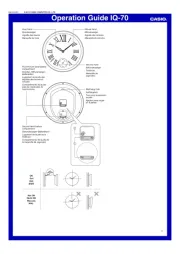
18 Juni 2025
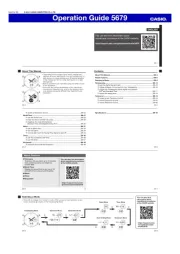
17 Juni 2025
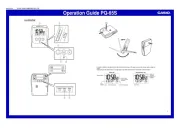
17 Juni 2025
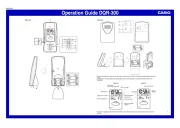
16 Juni 2025

16 Juni 2025
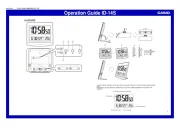
16 Juni 2025
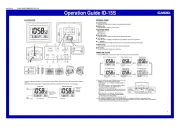
16 Juni 2025
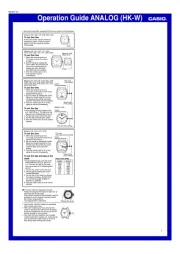
16 Juni 2025
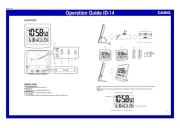
16 Juni 2025
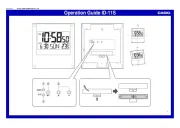
16 Juni 2025
Handleiding Horloge
- Breo
- Bruno Sohnle
- Executive
- Haffstreuner
- Christiaan Van Der Klaauw
- Crivit
- Adidas
- TW Steel
- Topcom
- Versace
- Lacoste
- Tauchmeister
- IWC
- Crane
- Speedo
Nieuwste handleidingen voor Horloge

5 Juli 2025

5 Juli 2025

4 Juli 2025

4 Juli 2025

4 Juli 2025

4 Juli 2025

4 Juli 2025

2 Juli 2025
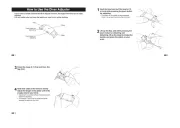
1 Juli 2025

21 Juni 2025